This step by step diy woodworking project is about raised planter box plans. If you want to grow flowers and vegetables but you don’t have a proper backyard, there is still hope. Building a wooden raised planter box will help you follow your dreams and get fresh vegetables every week. There are many garden projects featured on our site, so don’t be afraid to browse through the rest of the woodworking plans.
Before starting the actual construction project, we recommend you to plan everything, as to save money and to keep the costs under control. Adjust the size and the design of the planter to suit your needs. In addition, we recommend you to invest in high-quality materials, such as pine, redwood or cedar, as they have a nice finish and are highly durable, especially in a humid environment.
It is essential to invest in high quality materials, that are also water-resistant, such as pressure-treated lumber. Cut the components at the right size by using a circular saw and smooth the cut edges with a sand block. Don’t forget to ask a skilled friend to assist you during the project, especially if you don’t have a large expertise in the field. You need someone to hold the components into place, while you drive the screws in. See all my Premium Plans in the Shop.
Made from this plan
Raised planter box plans

Building a raised box
Materials
- A – 4 pieces of 2×2 lumber – 33″ long LEGS
- B – 6 pieces of 2×6 lumber – 57″ long, 6 pieces – 19″ long PANELS
- C – 2 pieces of 2×2 lumber – 57″ long, 1 piece of 3/4″ plywood – 19″x57″ long FLOOR
- D – 2 piece of 2×2 lumber – 57″ long, 9 pieces of 1×6 lumber – 22″ long SHELF
- E – 2 pieces of 1×2 lumber – 60″ long, 2 pieces – 66″ long TRIMS
- 4 pieces of 2×2 lumber – 8 ft
- 6 pieces of 2×6 lumber – 8 ft
- 2 pieces of 1×6 lumber – 10 ft
- 1 piece of 1×2 lumber – 10 ft
- 1 piece of 3/4″ plywood – 2’x6′
- 2 1/2″ screws
- 1 1/4″ screws
Tools
- Safety gloves, glasses, Miter saw, jigsaw
- Chalk line, tape measure, spirit level, carpentry pencil
- Drill machinery and drill bits
Tips
- Use a good miter saw to make the angle cuts
- Drill pilot holes before inserting the screws
Time
- One Week
Related
Building a raised planter box
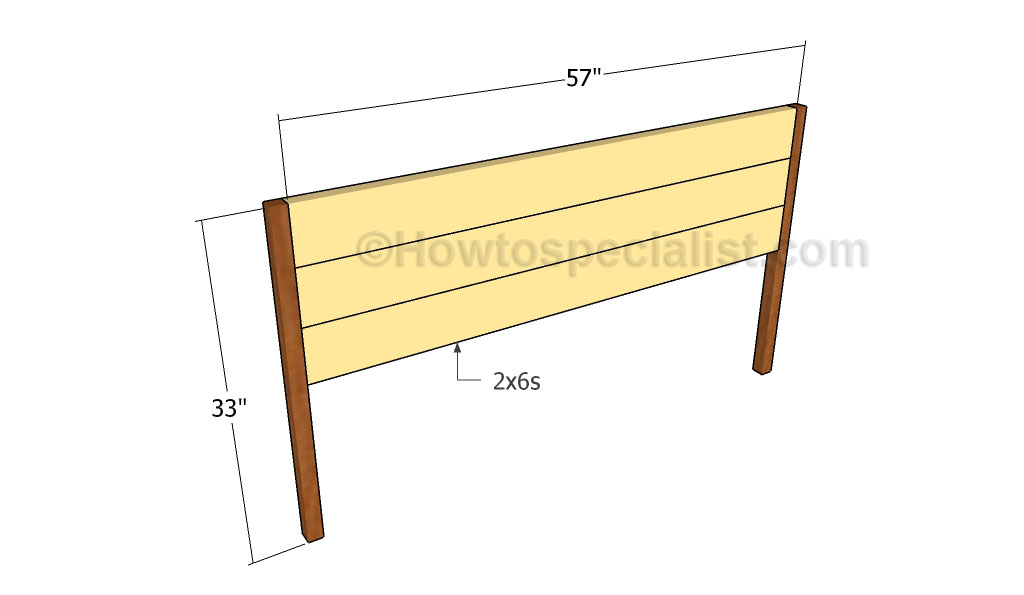
Building the sides of the raised box
The first step of the woodworking project is to build the sides of the raised planter box. As you can easily notice in the diagram, we recommend you to build the legs out of 2×2 lumber and the panel out of 2×6 lumber. Drill pocket holes at both ends of the slats and secure them to the 2×2 legs using 2 1/2″ screws. Add glue to the joints and leave no gaps between the components. Use a carpentry square to make sure the corners are right-angled.
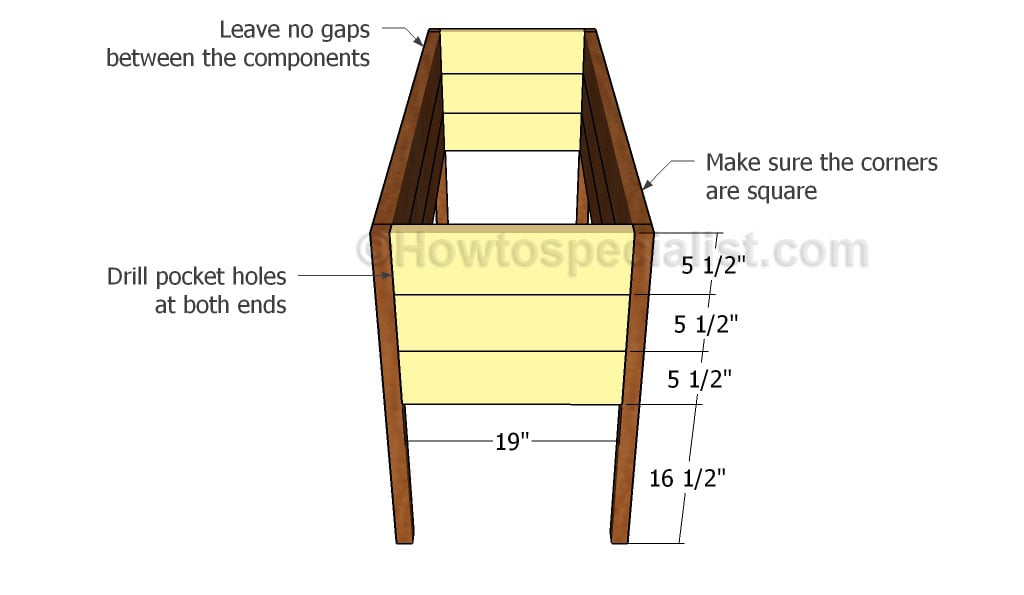
Assembling the frame of the box
The next step of the project is to assemble the planter box. As you can see in the diagram, we recommend you to build the other panels out of 2×6 lumber. Adjust the size of the slats to suit your needs. Drill pocket holes at both ends of the slats and secure them to the legs using 2 1/2″ screws. Add glue to the joints and make sure the corners are square.
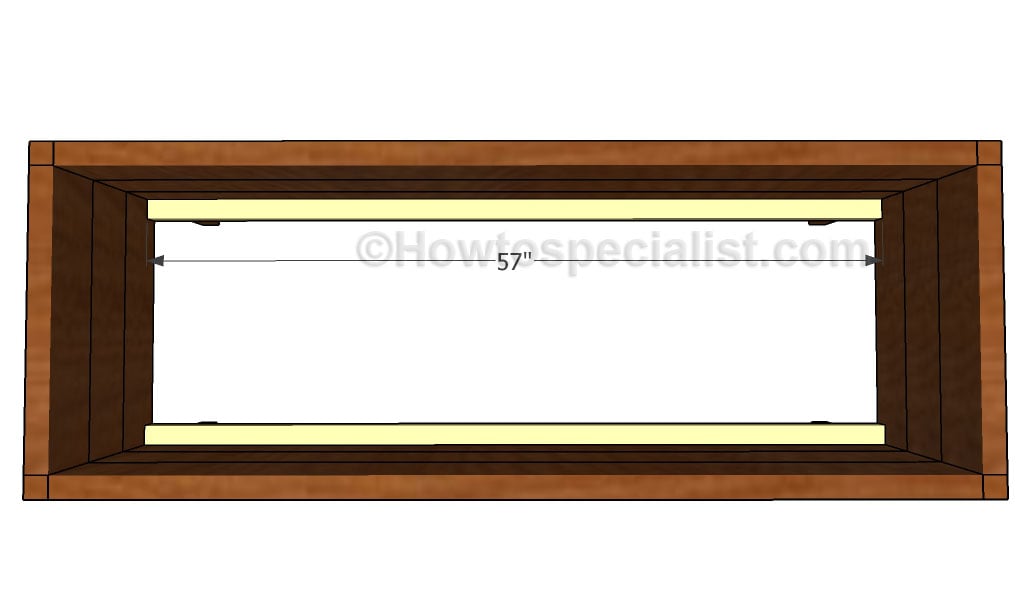
Installing the cleats
Next, fit the 2×2 cleats to the interior of the planter box, as described in the diagram. Drill pilot holes through the cleats and secure them to the frame using 2 1/2″ screws. Add glue to the joints and make sure the cleats are perfectly horizontal.

Fitting the bottom
Build the bottom of the raised planter box out of 3/4″ plywood. Cut the component at the right dimensions and fit it inside the planter box. Drill pilot holes along the sides and insert 1 1/4″ screws to create rigid joints. Add glue to secure the components in a professional manner and remove the excess with a damp cloth.
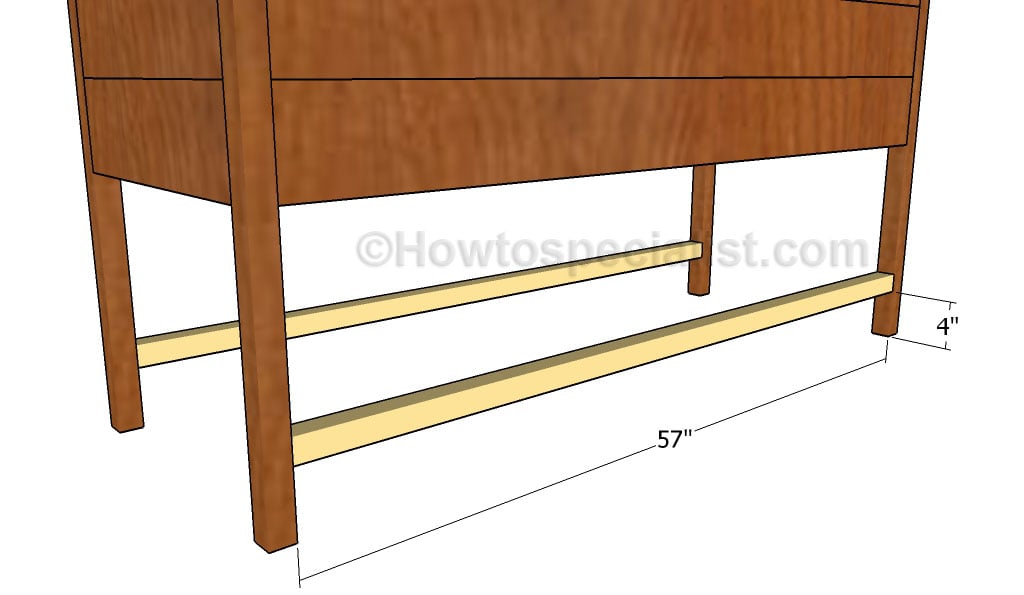
Fitting the shelf supports
Build the supports for the planter box out of 2×2 lumber. Fit the supports to both sides of the planter box, as shown in the diagram. Drill pocket holes at both ends of the supports and secure them to the legs using 2 1/2″ screws. Make sure the corners are square and leave no gaps between the components. Add glue to the joints.
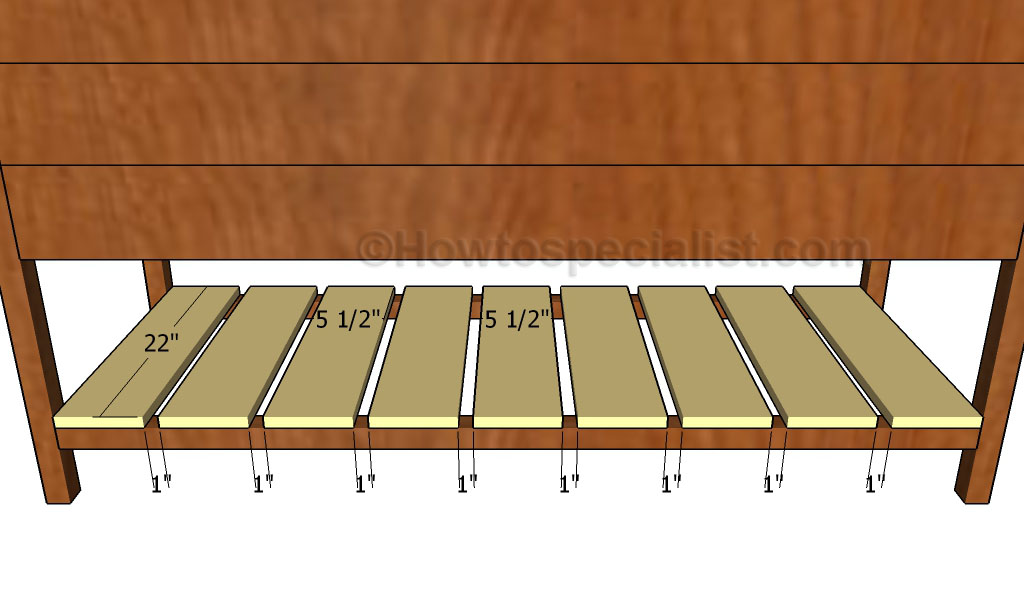
Building the shelf
One of the last steps of the project is to attach the 1×6 slats to the bottom supports. Place the slats equally-spaced and secure them to the supports using 1 1/4″ screws, after drilling pilot holes. Align the slats at both ends, to make sure the edges are perfectly flush.
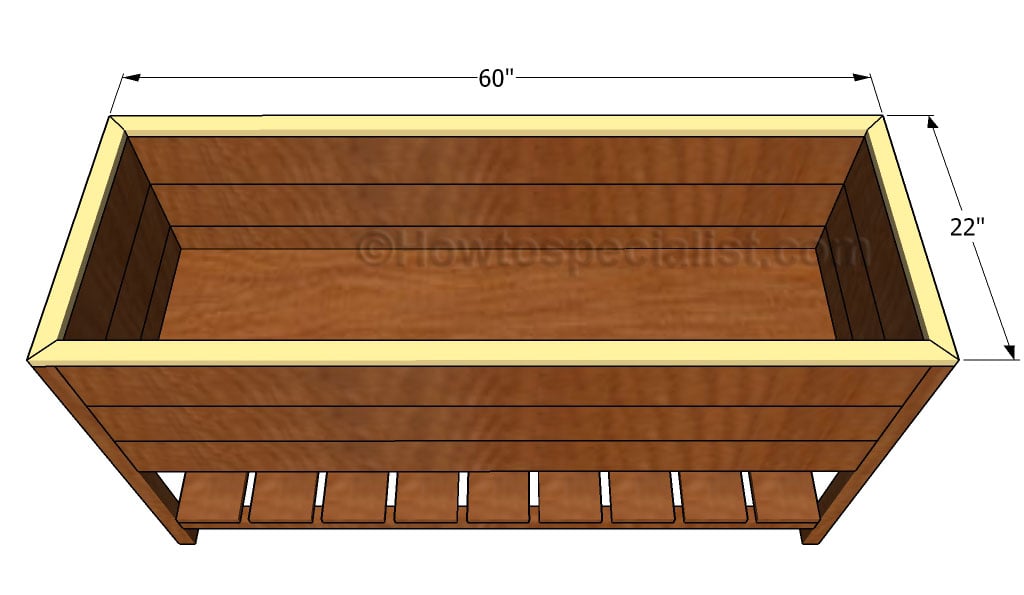
Fitting the top trims
One of the last steps of the project is to attach the 1×2 trims to the top of the planter. Cut both ends of the trims at 45 degrees and secure them to the frame using finishing nails. Add glue to the joints and remove the excess using a damp cloth.

Raised planter box plans
Last but not least, we recommend you to take care of the finishing touches. Fill the holes with wood filler and let it to dry out for several hours. Check out the rest of the diy projects, to see more ways to improve the look of your garden.
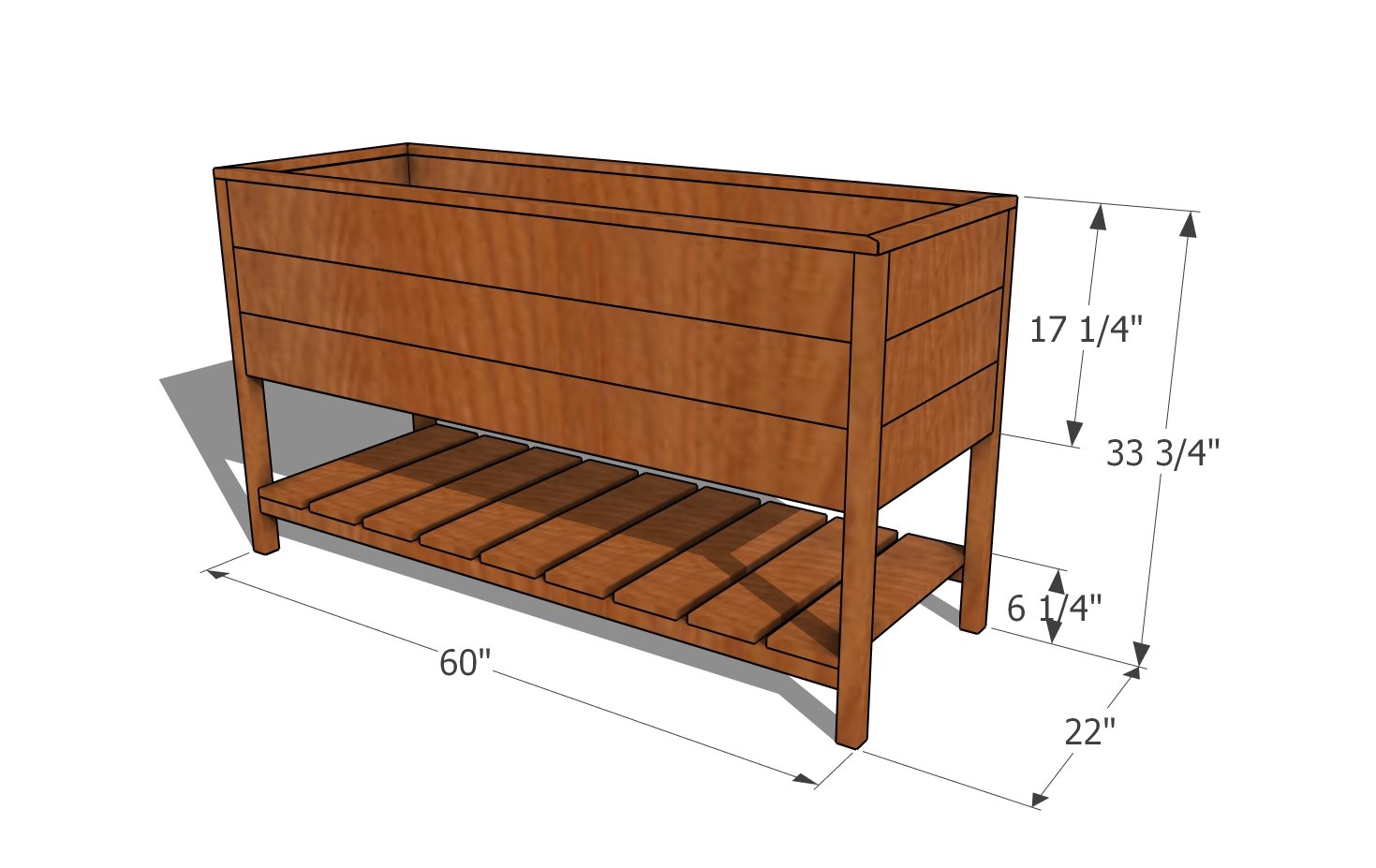
Raised planter box plans – dimensions
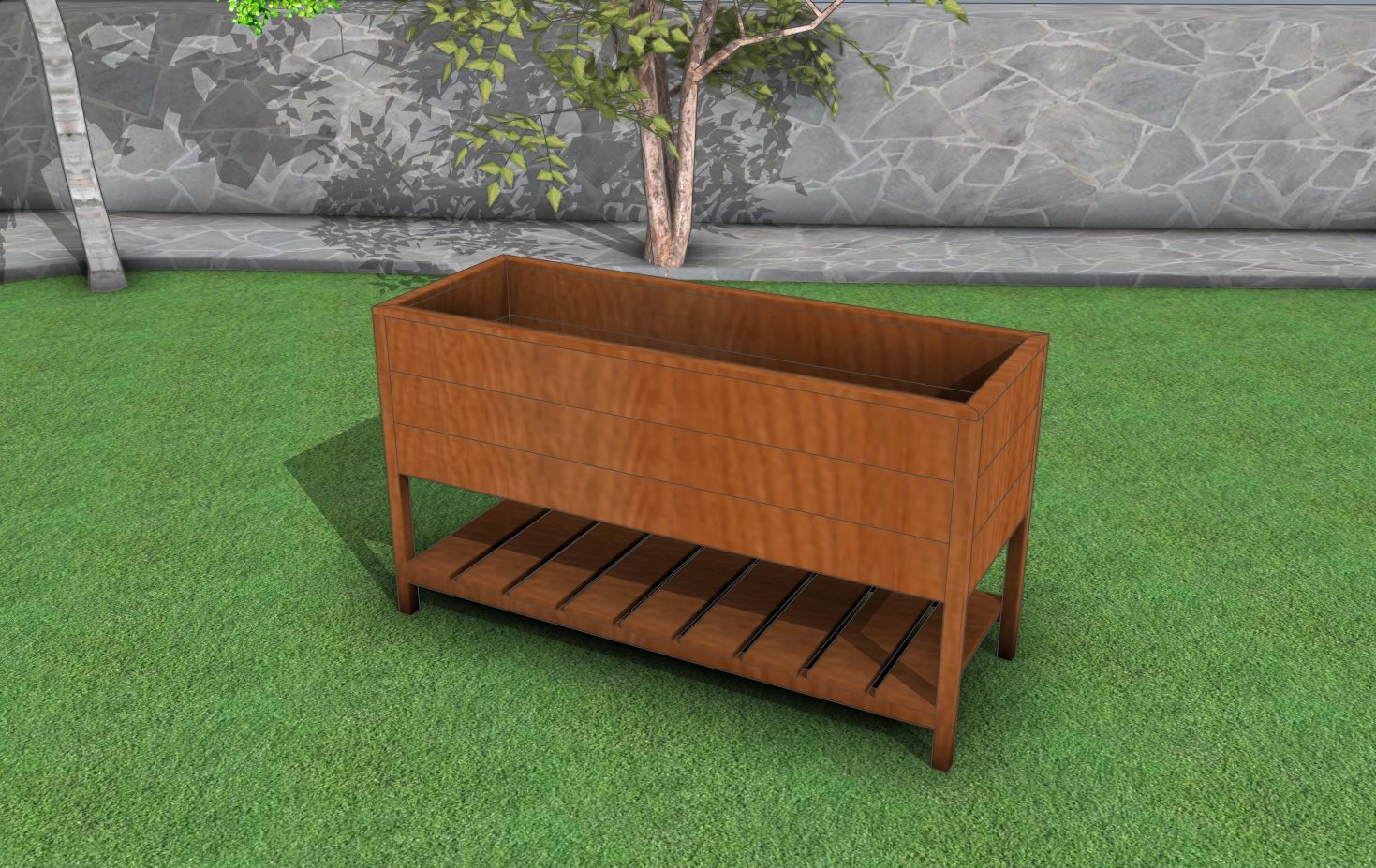
Elevated garden bed plans
Thank you for reading our project about raised planter box plans and we recommend you to check out the rest of the projects. Don’t forget to share our projects with your friends and LIKE us, by using the social media widgets, if you want to be the first that gets our latest articles. If you want to help us write more free DIY articles give us a Like or a +1.
